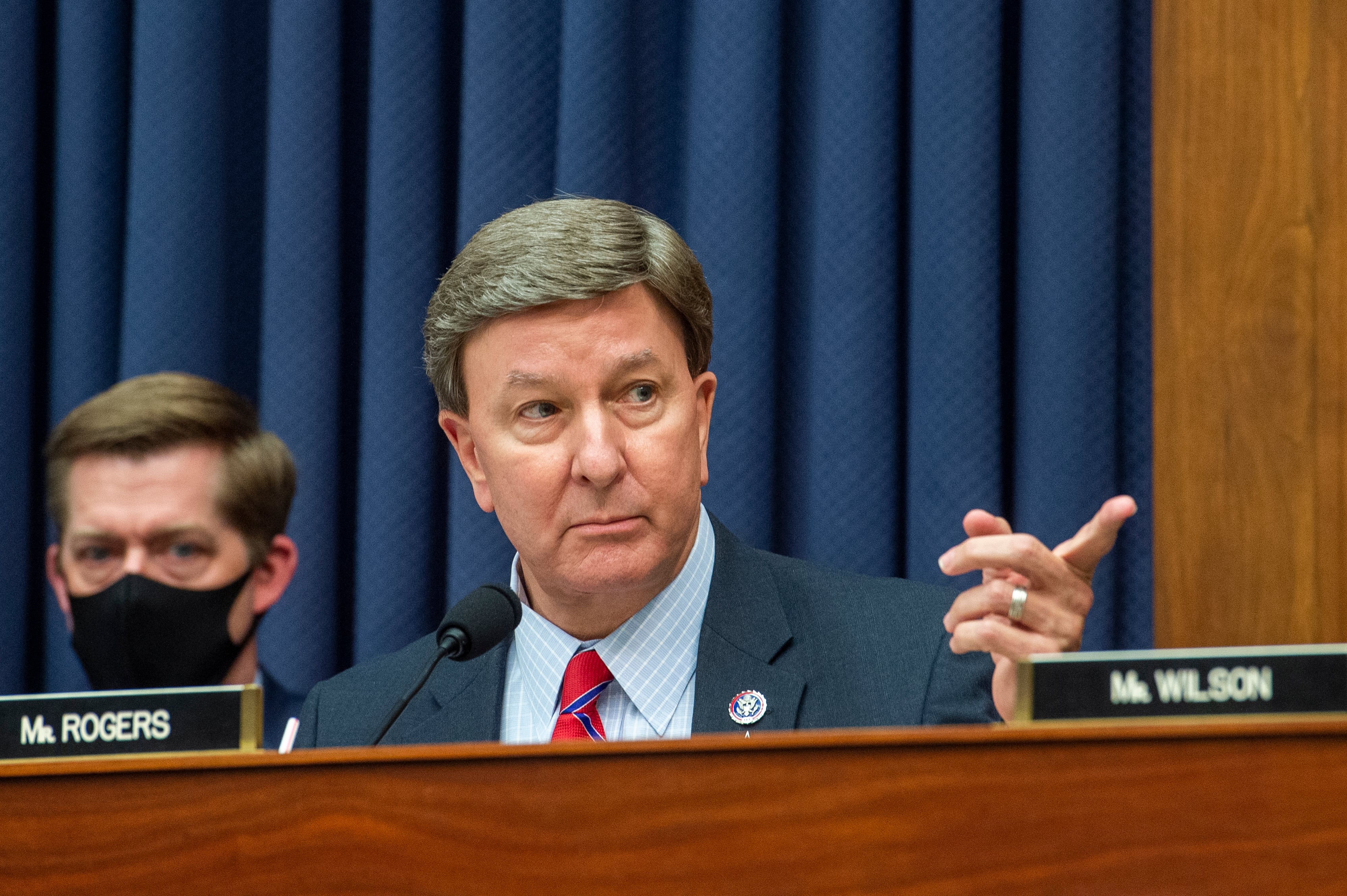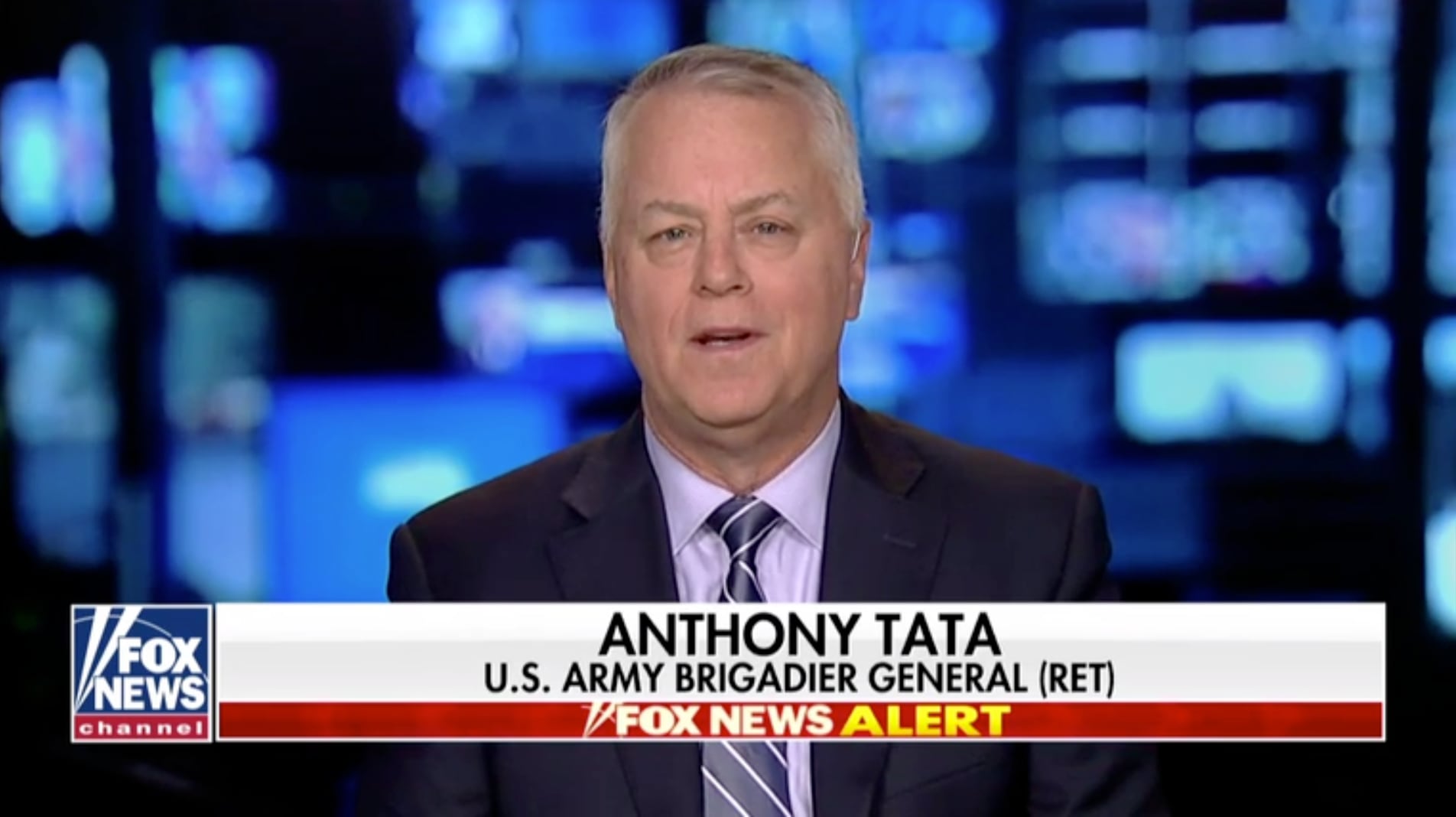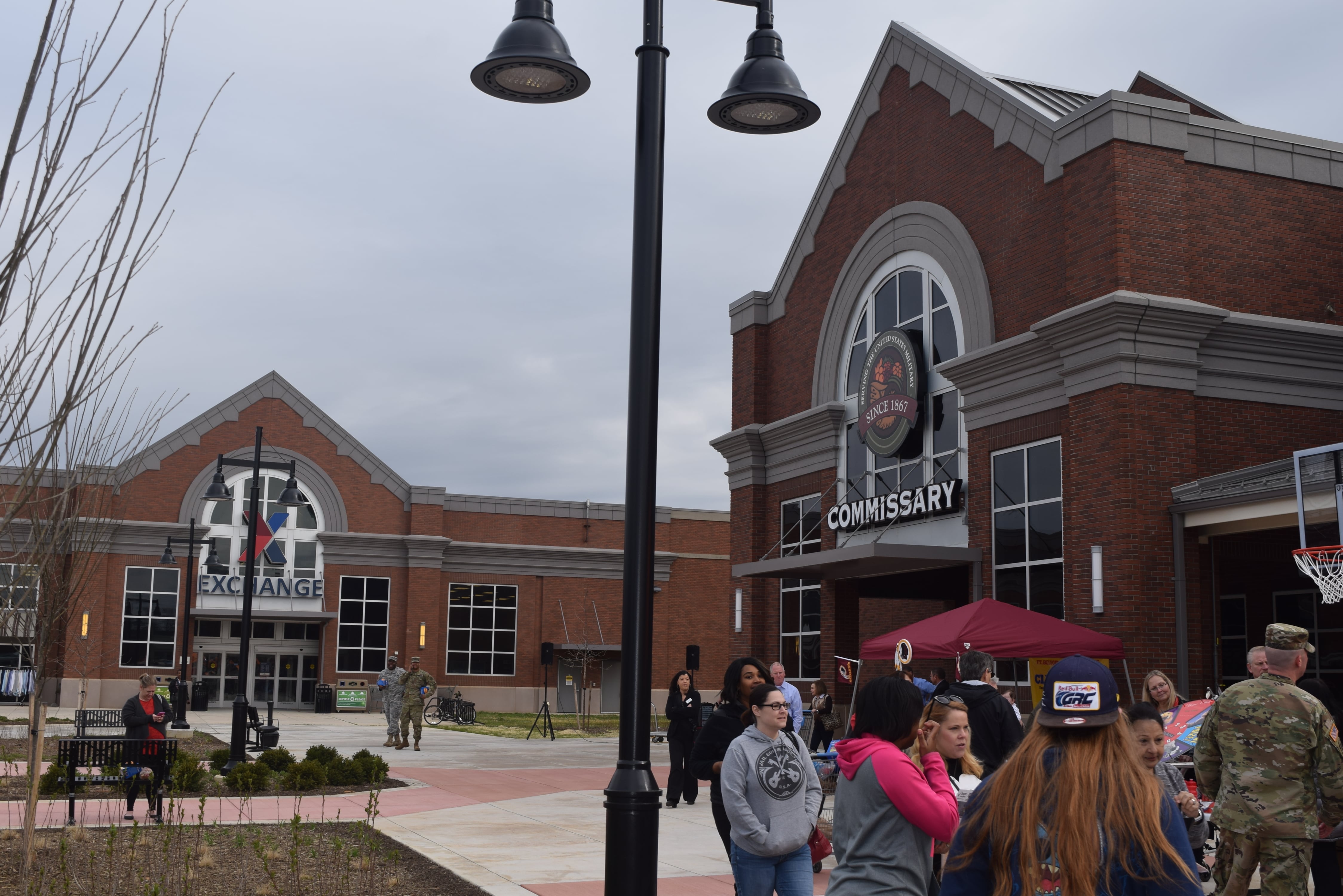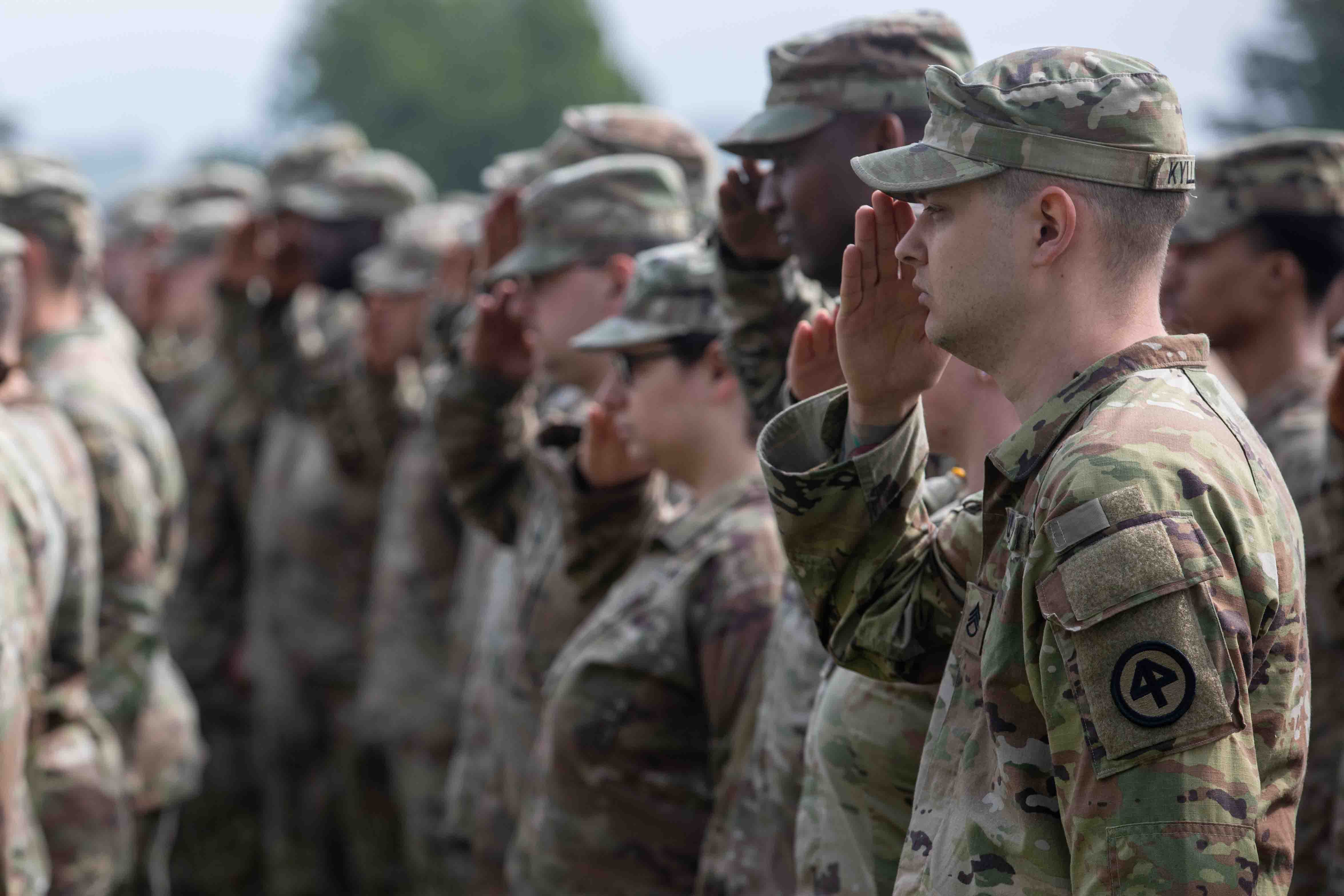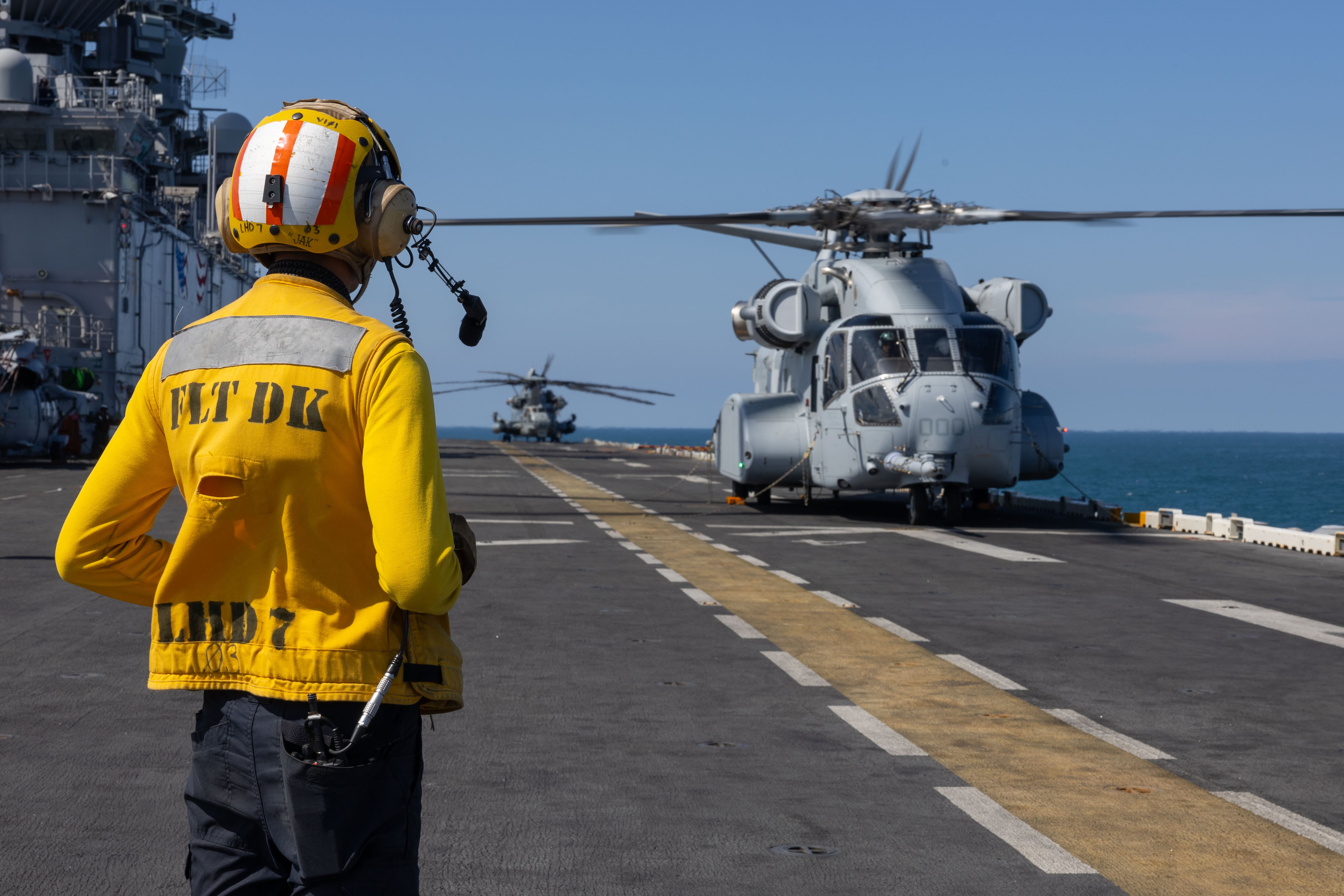It begins with the eyes.
Some are haunted, some are piercing, some appear to be seeking answers to an unnerving, unspoken question, and some — not many, but some — are happy, crinkled into joyous slits above broad grins.
According to the artist, the former President George W. Bush, the eyes are the trickiest part of portrait painting.
“If you notice, most of these start with the eyes. They really are the gateway to the soul,” said former Army Cpl. Joshua Mitchell, whose own eyes were captured in portraiture, along with those 97 other wounded veterans, by the 43rd president. “I know that sounds cliché … a lot of people don’t give him credit for because of his Texas antics, think he’s a caricature … but he’s deeply serious … like he really is trying to look inside us.”
Bush’s portraits of injured veterans made their debut in the 2017 bestseller “Portraits of Courage: A Commander in Chief’s Tribute to America’s Warriors.” They have traveled and been showcased at small museums around the country.
But this month, they landed in their most prominent exhibition venue to date: the new, $175 million dollar addition to the John F. Kennedy Center for the Performing Arts in Washington. The show, to mark Veterans Day, is the first art exhibit to be hosted at the facility, which opened Sept. 8.
Like all exhibitions of Bush’s veterans’ portraits, the artist was not in attendance at the opening on Oct. 7. The man who famously doesn’t sign his portraits because he doesn’t want to take away from the subject matter, left the introduction to the service members whose visages are featured in the larger-than-life color portraits.
Kennedy Center President Deborah Rutter said the exhibit, Portraits of Courage, is a “fitting first exhibition to be hosted in the REACH,” the new space’s name.
RELATED
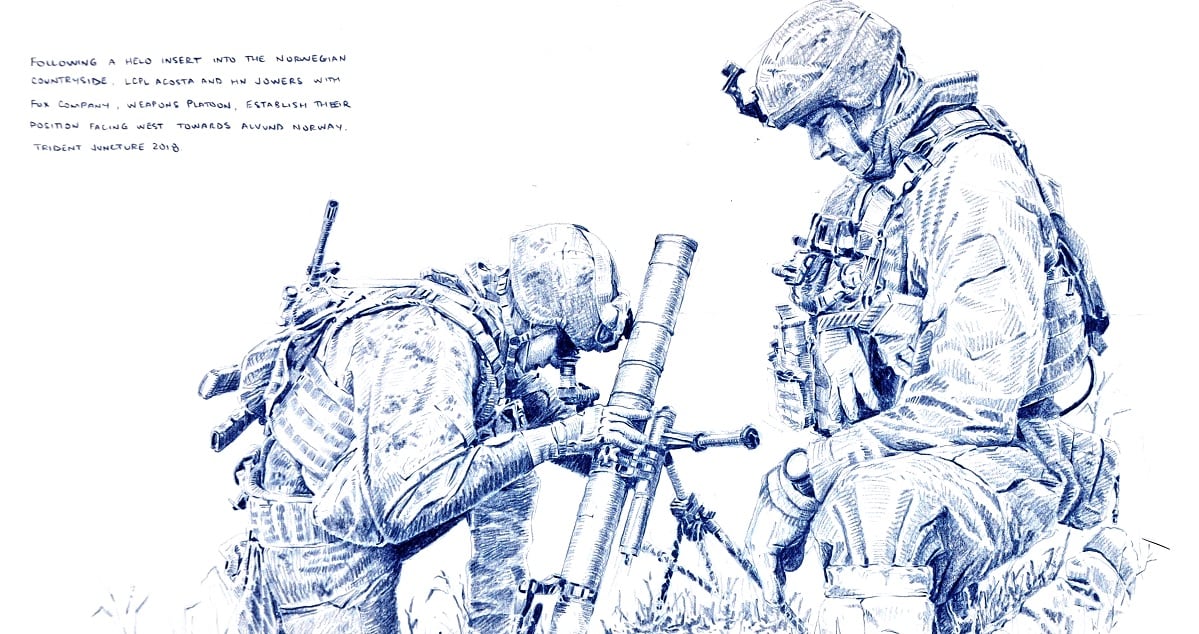
“The Kennedy Center is proud to share these works, painted by a living president, that honor the men and women who defend our freedom to explore, celebrate and create art,” she said.
“43’s” post-presidential hobby became known to the world in 2013 when his early works, which included decidedly odd self-portraits and paintings of pets, were leaked online by a hacker.
He took up the hobby after reading Winston Churchill’s essay “Painting as a Pastime,” published in 1948, and has been inspired to take art lessons from a series of instructors, who introduced him to a wider array of colors and broad brush strokes in a style known as impasto (think Van Gogh’s “Starry Night,” but not by a Great Master).
After moving on from pets to landscapes and world leaders he worked alongside, one of his instructors, Sedrick Huckaby, an associate professor of painting at the University of Texas at Arlington, suggested he paint people he “knows well but others don’t.”
He immediately thought of post 9/11 veterans, according to a a video that introduces the exhibit.
“I would like to remind the American people what an asset they have in veterans and they continue to be,” Bush says in the video.
As the founder of the Bush Institute’s Military Service Initiative, an organization that sponsors programs for veterans and brings together businesses, non-profits and universities to support post 9/11 veterans, the former president had no shortage of subjects. He met many of those portrayed during the Bush Institute W100K, a mountain bike ride held on his ranch in Crawford, Texas.
More than 52,800 U.S. personnel have been injured in the wars in Iraq, Afghanistan and elsewhere.
Retired Army Cpl. Joshua Michael was among those selected. He still has no idea why the former president chose him: he rode in the W100K and was told that Bush watched his biography video and had seen him around the ranch, where the San Antonio resident sometimes volunteered.
Michael grew up in Shelbyville, Illinois, and enlisted in the Army in 2009. Assigned to C-Co, 2-30 Infantry, 4th Brigade Combat Team, 10th Mountain Division, he deployed to Afghanistan in 2010. He had been there nearly a year when his unit came under mortar fire in the Tengi Valley. An 82 mm mortar round landed five feet from Michael, the corner of a Hesco barrier he was near shielding him enough to save his life.
“I didn’t know that I’d been hit and when I went to get up, my arm just shattered. That’s when I knew I was in trouble. It’s a weird thing what goes through your mind, though. I remember trying really hard not to say anything stupid because if I survived this, I knew I’d hear it again … I was trying to be all cool,” Michael remembered.
The blast shredded Michael’s left arm and leg and “rung [his] bell pretty hard. He was medevaced to Bagram, then to Landstuhl and eventually to the United States, where he landed on Sept. 11, 2011. He was was medically retired from the Army in 2013; it was during his recovery that Michael took up mountain biking to strengthen his grip and was offered the chance ride with Bush.
He has since volunteered at Bush’s ranch and traveled to promote the exhibit, including the trip to Washington — his first ever to the nation’s capital.
He is quick to defend the man who sent U.S. troops to Afghanistan and Iraq, a president who continues to be controversial, even in his artwork, which has been described by some critics as atonement for launching the nation’s longest war.
Michael disagrees with that assessment.
“It’s not that he’s guilty. He happened to be commander in chief on 9/11. He cares very deeply for veterans and wants to recognize the service and the sacrifice of the force, an all-volunteer force,” Michael said.
Retired Marine Staff Sgt. Timothy Brown, a former explosive ordinance disposal technician who lost his legs and right arm to a secondary improvised explosive device while disarming a primary IED in Afghanistan, is another of the 96 men and two women featured in Bush’s art.
He participated in the W100K in 2013 using a hand-cycle and later found out Bush had painted him. “I am pretty honored by the results … it was made by a president, I don’t care if it was a stick figure!” said Brown during the opening reception.
The former service member who is now studying management and marketing at Georgetown University described Bush’s portrait project as “pretty cool.”
“It’s so unique to see a president connect so directly with the men and women that bore the burden of these decisions. That burden is not lost on him. He is very well aware of it,” Brown said. “All of us mean something to him.”
Bush’s book on the paintings went to No. 1 on the New York Times nonfiction bestseller list when it was introduced in 2017 and it continues to be a top seller on Amazon. All sales proceeds go toward veterans transition and leadership programs sponsored by his institute’s Military Service Initiative.
Timed tickets to Portraits of Courage at the Kennedy Center are available for free. The show runs through Nov. 15.
“We are excited for the D.C. community to tour the exhibit and learn more about the issues our nation’s veterans face in their transition from military to civilian life,” said Kenneth Hersh, president and chief executive officer of the George W. Bush Presidential Center.
Patricia Kime is a senior writer covering military and veterans health care, medicine and personnel issues.

